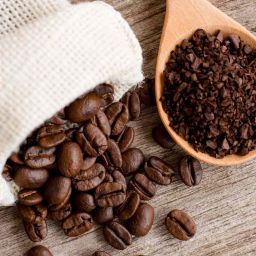
Vietnamese coffee, with its unique charm and robust flavor, has captivated coffee enthusiasts around the globe. The heart of its richness and distinctive taste lies in the choice of coffee beans. Selecting the best coffee beans for Vietnamese coffee is not just about flavor; it’s about embracing a culture that has cherished its coffee traditions for generations.
This blog post will guide you through the journey of finding the perfect coffee beans for an authentic Vietnamese coffee experience, shedding light on the types, characteristics, and the nuances that make Vietnamese coffee truly special.
The Unique Charm of Vietnamese Coffee
Vietnamese coffee is renowned for its strong, bold flavor and its unique preparation method that often involves a slow drip brew over sweetened condensed milk. What sets it apart is not just the brewing technique but the type of coffee bean used.
Typically, Vietnamese coffee is made with Robusta beans, known for their higher caffeine content and a more pronounced, somewhat bitter flavor compared to Arabica beans. This choice of bean complements the sweet, creamy profile of condensed milk, creating a harmonious balance that has defined the Vietnamese coffee style.
The cultural significance of coffee in Vietnam transcends the beverage itself. It’s a morning ritual, a gatherer of communities, and an artisanal craft that has been refined through the ages. From the bustling streets of Hanoi to the tranquil highlands of Da Lat, coffee is the heartbeat of the Vietnamese lifestyle, offering a moment of solace, a burst of inspiration, and a deep connection to the land and its people.
Understanding Coffee Beans
At the core of Vietnamese coffee’s distinctive taste is the type of coffee bean used. While Robusta beans are the traditional choice, understanding the nuances between different types of beans can enhance your coffee experience. Robusta beans are known for their strong, earthy flavor and high caffeine content, making them ideal for the bold profile of Vietnamese coffee. They are typically grown at lower altitudes in Vietnam, contributing to their characteristic taste.
On the other hand, Arabica beans, with their sweeter, more aromatic profile, are sometimes used to add complexity and a smoother finish to the coffee. Knowing the difference between these beans, their flavor profiles, and how they blend with the traditional Vietnamese coffee preparation methods is key to crafting the perfect cup.
Top Coffee Beans for Vietnamese Coffee
Robusta Beans
Characteristics: Robusta beans are the backbone of traditional Vietnamese coffee. They are known for their high caffeine content, which is almost double that of Arabica beans, and their strong, robust flavor profile. These beans tend to have a slightly bitter, earthy taste, with a smooth, rich texture that pairs perfectly with sweetened condensed milk.
Why They’re Preferred: The preference for Robusta in Vietnam is not just about tradition. The bean’s bold flavor and higher caffeine kick are well-suited to the Vietnamese palate and lifestyle, providing a hearty start to the day. Its robustness also stands up to the sweetness of the condensed milk, creating a balanced and invigorating beverage.
Best Brands: When looking for Robusta beans for Vietnamese coffee, consider brands that source directly from Vietnam, such as Trung Nguyen, Vinacafe, and Highlands Coffee. These brands offer beans that are specifically roasted for Vietnamese coffee, ensuring an authentic experience.
Arabica Beans
Characteristics: Arabica beans are prized for their sweeter, more nuanced flavors, with notes of fruit and sugar, often accompanied by a higher acidity compared to Robusta. They are typically grown at higher altitudes, which contributes to their complex flavor profile.
How They Differ From Robusta: While Arabica beans are less common in traditional Vietnamese coffee, they are sometimes used to add a different dimension to the drink. Their smoother, more aromatic profile can soften the boldness of Robusta, creating a cup that’s both rich and refined.
When to Use Them for Vietnamese Coffee: Arabica beans can be a great choice for those who prefer a slightly less intense coffee experience or are looking to experiment with their Vietnamese coffee. Mixing Arabica with Robusta in a blend can offer the best of both worlds, combining strength with subtlety.
Blends
Popular Blends for Vietnamese Coffee: Blending Robusta and Arabica beans is becoming increasingly popular among Vietnamese coffee enthusiasts looking to customize their coffee’s flavor profile. A common blend ratio is 70% Robusta to 30% Arabica, offering a perfect balance between strength, bitterness, and aromatic complexity.
What Makes Them Special: Blends allow coffee drinkers to tailor their Vietnamese coffee experience to their taste preferences. Whether you lean towards a bolder, more traditional cup or a lighter, aromatic one, using a blend gives you the flexibility to explore a spectrum of flavors.
Factors to Consider When Choosing Coffee Beans
Freshness
The freshness of coffee beans is crucial to the quality of your brew. Fresh beans will produce a coffee that is more flavorful and aromatic. Look for beans that have been roasted within the past month and store them in an airtight container to maintain their freshness.
Roast Level
Vietnamese coffee traditionally uses a medium to dark roast to achieve its signature strong and bold flavor. The roast level significantly influences the coffee’s bitterness and strength, so choosing the right roast is key to authentic Vietnamese coffee.
Origin
The origin of the coffee bean can affect its taste profile. Vietnamese coffee beans, grown in the country’s distinct climate and soil conditions, offer unique flavors that are ideal for Vietnamese coffee. However, experimenting with beans from other regions can also yield delicious results.
Preparing Vietnamese Coffee
To brew Vietnamese coffee at home, you’ll need a Vietnamese coffee filter (phin), ground coffee, hot water, and sweetened condensed milk. Here’s a simple guide:
- Add Coffee to Filter: Place about 2 tablespoons of ground coffee in the filter.
- Compact the Coffee: Use the press to lightly compact the coffee.
- Add Hot Water: Pour hot water into the filter and cover it with the lid. The coffee will slowly drip into your cup.
- Add Sweetened Condensed Milk: While the coffee is dripping, add sweetened condensed milk to your cup according to taste.
- Stir and Enjoy: Once the coffee has finished dripping, stir it well with the condensed milk and enjoy.
Conclusion
Choosing the best coffee beans for Vietnamese coffee involves understanding the unique characteristics of Robusta and Arabica beans, considering blends, and paying attention to freshness, roast level, and origin. Preparing Vietnamese coffee at home with the right beans allows you to experience the rich, bold flavors that define this beloved beverage.
Whether you’re a long-time fan or new to Vietnamese coffee, experimenting with different beans and brewing methods can lead to your perfect cup, connecting you to the rich coffee culture of Vietnam.









